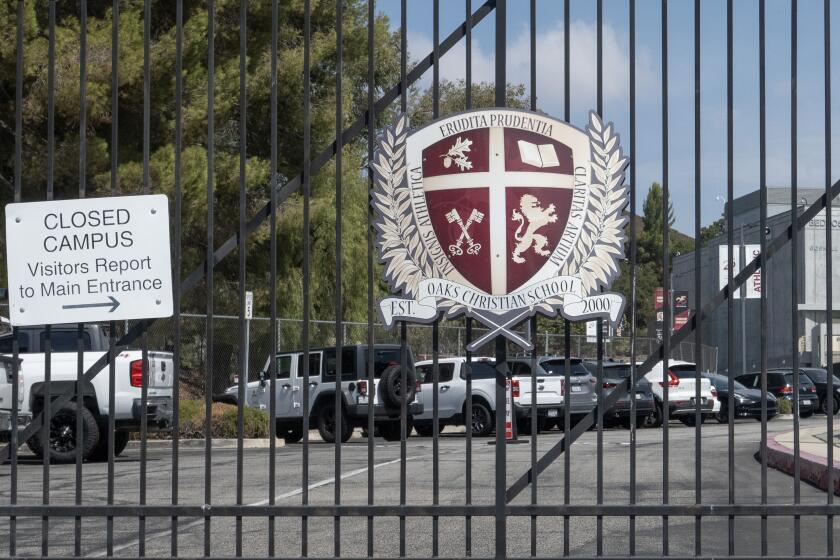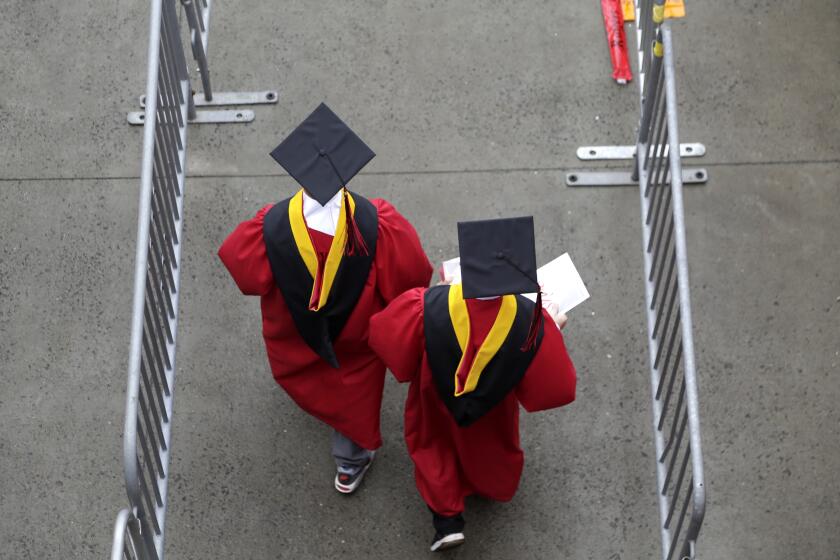Lax Oversight, Low Standards for State’s Nonpublic Schools
“Nonpublic” schools. Even the name suggests something like an identity crisis.
These little-known schools, which serve a growing number of disturbed children, are privately owned but funded almost entirely by taxpayers. They operate somewhere between public and private education, between free enterprise and government control.
As a result, public oversight is lax and state standards sometimes shockingly low. In the worst cases, a review by The Times found, operators have been allowed to open or maintain nonpublic schools despite being previously sanctioned for child abuse, fraud and gross overbilling.
The Mary Bonds School in South Los Angeles was a painful example.
Bonds opened a group home for foster children in 1987. In 1993, the state accused Bonds and her employees of a string of violations--including the regular physical abuse of children with belts, electrical cords and switches. Bonds was forced to close her foster care facilities and pledged in an agreement with the California Department of Social Services not to apply for a permit to care for children for at least 10 years.
But that agreement applied only to one state agency. Bonds had already begun to diversify a year earlier--into the business of nonpublic schools. She won certification from the state Department of Education and, within two years, had enrolled 30 Los Angeles Unified School District students. She grossed $475,000.
In early 1996, an L.A. Unified analyst wrote Bonds to express concern over multiple police calls to the school and reports that students “appear to be out of control.” For a year, nothing happened.
Finally, last spring, Bonds’ daughter, a co-operator of the school, blew the whistle. Carla Crowder told school district and state regulators that Bonds allowed students to run amok, fight and leave campus, sometimes to get drunk. She also alleged that her mother padded bills to the district.
Bonds told regulators that the allegations were merely the product of a family feud.
When Bonds closed suddenly last year, she gave school district officials only a day’s notice. L.A. Unified auditors eventually found overbillings of about $11,000 and suspected greater losses, but their work was short-circuited because most of the school’s financial and attendance records were missing.
Bonds declined to comment. Crowder said she is relieved that the facility is closed.
“It was just a money thing,” Crowder said. “And the people who are in it for the money, not the kids, really put a kid at a disadvantage.”
The scenario is not unique.
The state Department of Social Services shut down the operator of a Carson social service agency in 1995 for falsifying documents and failing to ensure the well-being of foster children. A few months later, Marc Garrett was up and running again, this time with a nonpublic school called New Solid Foundation Academy. The school closed this year.
State and local regulators concede that there is nothing to prevent another Mary Bonds or Marc Garrett from entering the business.
California law requires only that nonpublic school operators disclose any past sanctions by agencies like the state Department of Social Services. The offenses themselves can’t automatically disqualify an applicant, officials said.
A top state Department of Education administrator marveled at how little his agency requires to “certify” nonpublic schools. “It’s not much more than if you were licensed to be a corporation,” said the official, who asked not to be identified. “There is a big difference between having this certification and being qualified to work with kids.”
Efforts are underway to improve the schools. Starting July 31, classroom aides must have at least a high school diploma and pass a minimum competency test.
Los Angeles’ mammoth school district, which accounts for nearly one-third of students enrolled in California’s nonpublic schools, is struggling to comply with a federal court decree that it improve service to special education students. One goal is to move children out of nonpublic schools and back into mainstream public schools.
In the short term, the school district has stepped up its inspections of the nonpublic campuses and pushed for better reporting of attendance and student progress.
The most profound change in control of the nonpublic schools may come in July, when the state’s new special education funding formula takes effect.
Now, when a school district transfers a child to a nonpublic school, the district pays the higher fees of the new school, and is later reimbursed for most of that cost by the state. Critics complain that the arrangement has made it too easy for school districts to unload problem pupils.
Under the new plan, school districts will get a set amount of money per child, regardless of whether the student attends his or her own campus or a nonpublic school.
“This should finally cut out the incentive for trying to place more kids in these special places or in declaring more kids as special ed,” said Greg Hudson, a consultant with the state Department of Education who helped write the new funding legislation.
Times staff writer Nicholas Riccardi contributed to this story.
More to Read
Sign up for Essential California
The most important California stories and recommendations in your inbox every morning.
You may occasionally receive promotional content from the Los Angeles Times.











